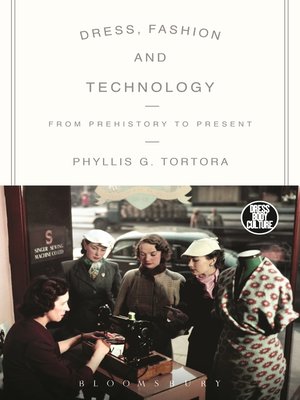Dress, Fashion and Technology
ebook ∣ From Prehistory to the Present · Dress, Body, Culture
By Phyllis G. Tortora

Sign up to save your library
With an OverDrive account, you can save your favorite libraries for at-a-glance information about availability. Find out more about OverDrive accounts.
Find this title in Libby, the library reading app by OverDrive.



Search for a digital library with this title
Title found at these libraries:
| Library Name | Distance |
|---|---|
| Loading... |
Technology has been an essential factor in the production of dress and the cultures of fashion throughout human history. Structured chronologically from prehistory to the present day, this is the first broad study of the complex relationship between dress and technology.
Over the course of human history, dress-making and fashion technology has changed beyond recognition: from needles and human hands in the ancient world to complex 20th-century textile production machines, it has now come to include the technologies that influence dress styles and the fashion industry, while fashion itself may drive aspects of technology. In the last century, new technologies such as the electronic media and high-tech manufacturing have helped not just to produce but to define fashion: the creation of automobiles prompted a decline in long skirts for women while the beginnings of space travel caused people to radically rethink the function of dress. In many ways, technology has itself created avant garde and contemporary fashions.
Through an impressive range of international case studies, the book challenges the perception that fashion is unique to western dress and outlines the many ways in which dress and technology intersect. Dress, Fashion and Technology is ideal reading for students and scholars of fashion studies, textile history, anthropology and cultural studies.
Over the course of human history, dress-making and fashion technology has changed beyond recognition: from needles and human hands in the ancient world to complex 20th-century textile production machines, it has now come to include the technologies that influence dress styles and the fashion industry, while fashion itself may drive aspects of technology. In the last century, new technologies such as the electronic media and high-tech manufacturing have helped not just to produce but to define fashion: the creation of automobiles prompted a decline in long skirts for women while the beginnings of space travel caused people to radically rethink the function of dress. In many ways, technology has itself created avant garde and contemporary fashions.
Through an impressive range of international case studies, the book challenges the perception that fashion is unique to western dress and outlines the many ways in which dress and technology intersect. Dress, Fashion and Technology is ideal reading for students and scholars of fashion studies, textile history, anthropology and cultural studies.







